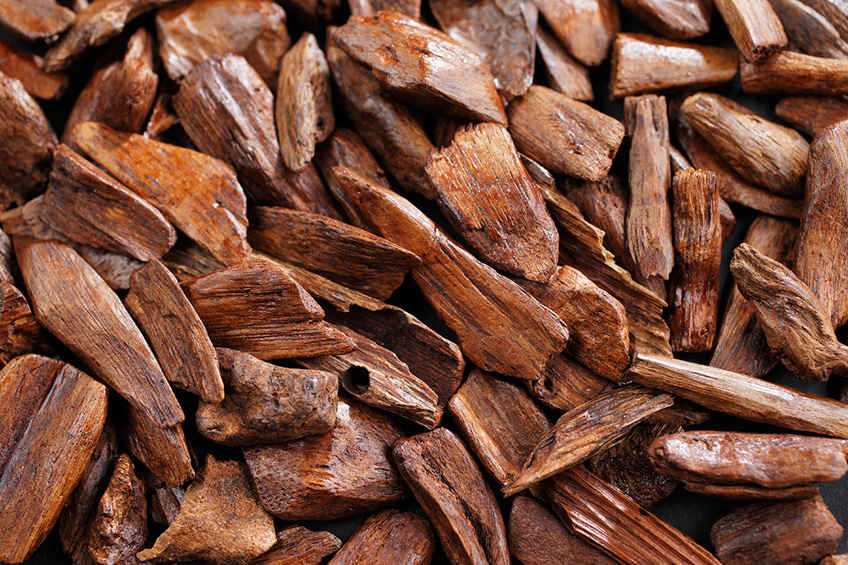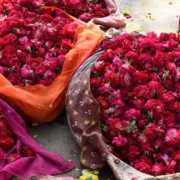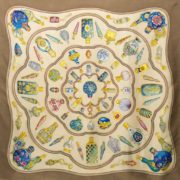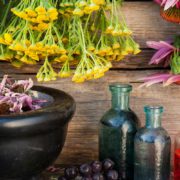How Oud Perfume is made

Oud has taken the perfumery world by storm. Is one of the most sought-after as well as expensive perfumes in the world. Oud perfumes are made from the dark, intense essential oil extracted from one of the costliest and rarest woods called agarwood.
For Western people, the use of oud might be something new. But for the Eastern ones, oud oil is known as black gold, which is deeply rooted in their history and culture.
Curious to know how oud perfumes are made? Let’s explore the fascinating journey of oud oils from an infected resinous wood of the agar tree to a fixative of world-class perfumeries.
Table of Contents
What is oud?
Oud, also known as Oudh or Agarwood, is built in an evergreen tropical tree of the Aquilaria species called Agar tree, which is assumed to have originated from India, specifically from the Assam state. The genus Aquilaria holds about fifteen species that now grow wild in the rainforests of Southeast Asia, especially in Northeast India, Malaysia, Thailand, Bangladesh, Laos, Vietnam, Indonesia, Cambodia, and the Philippines, among others.
When an Agar tree is attacked and infected by a specific type of fungus (parasitic mold) in its heartwood, it attempts to protect and heal itself by releasing a sticky, dark resin. This resin starts changing the color, aroma, and composition of the wood, forming the resinous heartwood of the tree from the inside, and becomes hard over time.
Both the resin and the resinous heartwood are known as oud. Oud oil used in making perfumes is either extracted by melting the hard aromatic resin or distilling the resinous wood.
Pure oud oil has many different grades that emanate a range of mesmerizing fragrances often described as heavy, deep, warm, spicy, animalic, leathery, woody, and balsamic notes in perfumery. In simple words, oud has no comparison in the world.
How oud perfumes are made
It’s a long step-by-step process that’s not only time-sensitive but also labor-intensive. Let’s take a look at how oud perfumes are made.
The infection
Since the resin is only released after a mold infection, only one out of ten trees may have an infected heartwood. In fact, a total of two percent of these wild agar trees produce oud.
Expert artisans seek out these rare infected trees due to the unique, superior aroma of the oud.
The mold infection naturally takes a long time to produce oud.
Sometimes wounds are created artificially to provoke an infection. This artificial process may help yield harvesting agarwood faster, but the oud produced this way lacks the concentration of that made from natural infection, just like cultured versus natural pearls.
Sorting resinous agarwood chips
After harvesting, agarwood is cut down into small chips. Skilled professionals remove unusable woods and sort out the resinous agarwood chips for making incense or oud oil.
Processing
Then the agarwood chips are soaked in water for a while until they become soft and ready for distillation. There are more than 150 grades of agarwood substances, each with a distinct smell.
The artisans separate different grades of agarwood that can produce different essences of pure oud. This is an extraordinary art. These artisans are extremely skilled at discovering and differentiating many different agarwood grades.
Distillation process
The process of distillation from oud wood to oud oil is quite vast. However, here is a brief summary. The resinous wood chips are ground into tiny pieces like powder, which are then soaked in water and left for a considerable amount of time to ferment properly. Then the ingredients are transferred to distillation vessels for steaming.
After heating at an adequate temperature, the wood particles release oud oil that floats on the top portion of the water as it is lighter. The condensed water, along with oud oil, is received in a vessel, and then pure oud oil is dissociated from water and kept in a separate container.
Final oud oils
The pure oud oil is left in open sunlight so that any excess moisture within the pure oil can evaporate over time. This assures that the oil is as pure as possible.
In general, two distillation methods are standard. Water- or hydro-distillation is commonly used in India, Thailand, and Cambodia, while forced steam distillation is more common in Indonesia.
These techniques help extract their distinct aromas from the final oud oils. These pure oud oils have historically been valued for making perfumes and incense across many cultures, especially Indian, Chinese, and Arabian, making it one of the costliest raw ingredients in the fragrant world.
Why oud perfumes are so expensive
Infection is the first and foremost condition for releasing the aromatic resin for an Agar tree. Without infection, agar trees don’t bear any resinous substance and thus, can’t produce even a small piece of agarwood. Because of this brutal fact, only a total of two percent of wild Agar trees can actually produce oud or oudh.
Only a mature fungal infection can produce high-quality agarwood, and trees that are more than 50 years old have the desirable ability to produce superior quality agarwood. Even though the infection occurs in a tree as early as 5 to 6 years of age, it takes around 10 years to produce good quality agarwood. Besides, many countries consider these old wild trees as threatened species.
Finally, although the scents of oud are described as woody, deep, heavy, and in many other ways, pure oud has the astonishing property to release many different, distinct smells that neither have any comparison nor can people express in their words.
The rarity, uniqueness, and long duration are the major contributing factors to its value and status. In addition, perfumes made from oud essential oils are becoming increasingly popular day by day across modern Western societies. All these factors contribute to its position as one of the costliest fragrant commodities in the global market.
Final words
Oud is by far one of the most expensive natural perfumes in the world. To understand the rationality of its value, it’s worth knowing how oud perfumes are made and how they smell. If you ever experience its mesmerizing deep, heavy, woody, warm, animalic, and balsamic notes that don’t have any analog in the world, you will definitely agree with its value.
Here you can check out our Pure and Natural Oud Perfumes.
SEE ALSO:





















Leave a Reply
Want to join the discussion?Feel free to contribute!